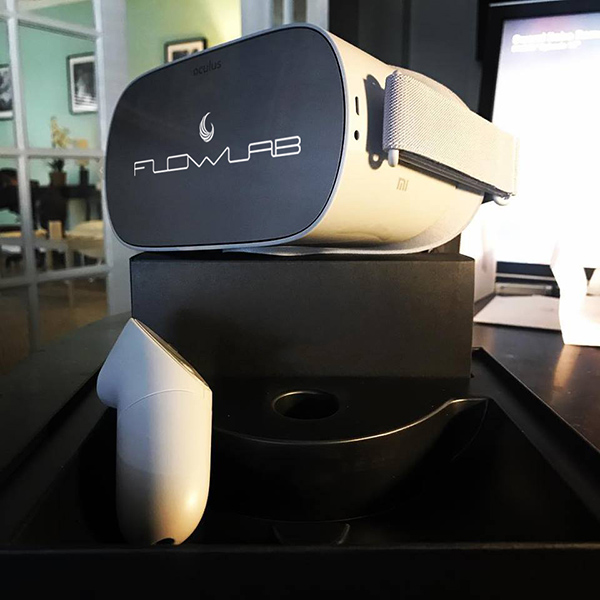
Virtual Reality Hypnosis
Virtual reality technology, which enables a person to interact with a computer-simulated environment, has been used in a variety of training settings, such as medicine and the military, as well as in the gaming industry in places like Game Works. It typically involves donning a special helmet that enfolds the wearer in a virtual world of sight and sound and can be manipulated with manual controls, such as a joystick.
In the UW Department of Rehabilitation Medicine, we have been working with the UW Human Interface Technology (HIT) Lab to use virtual reality to help induce hypnosis. One of the pioneers in virtual reality, the HIT lab was approached years ago by the military to help develop flight simulators for military pilots. We have a simulated emergency room where trainees can practice treating patients in an emergency situation, as well as simulated operations and surgical procedures.
Patterson, along with Hunter Hoffman at the HIT Lab, came up with the idea of using virtual reality to help induce hypnosis in hospital patients with severe acute pain, specifically burn patients. These patients were
taking opiate medications and as a result were often too sedated to be able to focus their attention and benefit from hypnosis.
Patterson and Hoffman speculated that virtual reality might make hypnosis less effortful because it frees the patient from having to come up with the image of something relaxing or comforting to focus on; all they have to do is open their eyes and they are immersed in another world. Hoffman first published on the therapeutic use of virtual reality in Scientific American in 2004.
With burn patients in mind, Hoffman created Snow World, which gives the illusion of gliding through a cool, snowy canyon. In one version, patients can interact with the environment by shooting snowballs at snowmen and penguins to make them disappear in a puff of powder.
Unlike conventional video games, all peripheral vision is sealed off from outside distractions. In comparison studies, virtual reality was far more successful than Nintendo for reducing pain during burn care.
Snow World can also be used for virtual reality hypnosis (VRH) for chronic SCI pain. Wearing a special helmet, the patient is immersed in the Snow World program while undergoing the same steps of hypnotic induction as in regular hypnosis. As the patient floats (virtually) down the canyon, the therapist guides the patient verbally through progressively deeper stages of relaxation, ending in the deepest stage at a beautiful lake.
Using Hypnosis for Treating Chronic Pain
At that point, the therapist gives post-hypnotic suggestions for comfort, relaxation, and pain management. At the end, the therapist guides the patient back up the canyon to alertness. The whole process takes about thirty minutes.
In a single case study at Harborview, VRH was used for the first time with a patient with SCI who had recurrent severe neuropathic pain for many years. Her pain did not respond to any pain medications, and hypnosis alone was not beneficial.
After several VRH sessions, her average pain rating went from a seven (out of 10) to a five—not a huge drop, but significant for someone experiencing ongoing pain. Although this involved only one patient, these findings are promising, and we will continue looking at how we can use the VRH for all types of chronic pain syndromes.


Finding A Qualified Therapist
It is important to work with someone who is qualified to use hypnosis in a therapeutic setting. I am not a hypnotist, and my colleagues are not hypnotists; we are clinical psychologists who use hypnosis as one technique for helping to manage pain. This is a crucial point. People who advertise themselves as hypnotists may or may not have any kind of behavioral or mental health training.
But pain is such a complex issue that you really need to work with somebody who understands pain, who understands behavior management, depression, anxiety, and who use hypnosis as one of many techniques that can help manage pain. I think it is important to find a psychologist, a social worker, a nurse, a counselor who has training in hypnosis and can use it in a broader context of a multi-disciplinary approach to pain management.
- Do not go to someone who advertises as a “hypnotist” where hypnosis is all they are trained to do.
- Look for a therapist who has training in hypnosis, but also is familiar with other types of therapeutic interventions.
- Shop around until you find someone with whom you have good rapport. If you do not feel comfortable with someone, the hypnosis is unlikely to work.

